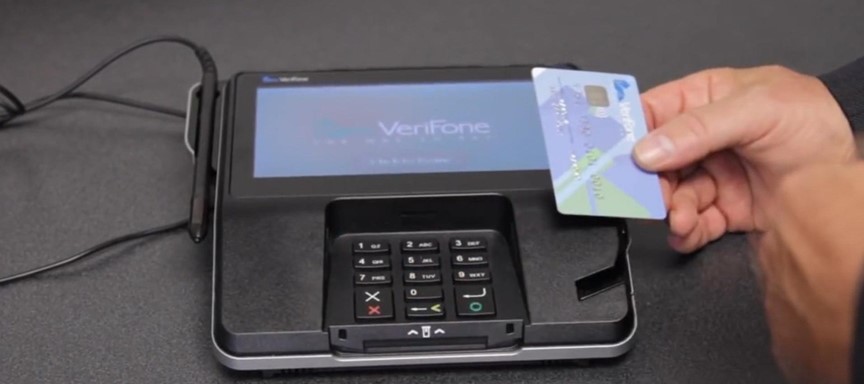
EMV: The New Standard and the Changes it Creates
Changes in the Credit Card Industry
There’s good news for people who are planning to get another credit card or are about to get their first credit card (check out the best credit cards for no credit if you’ve never had a card before) as there is a new security measure that is going to appear on card from now on. EMV will allow for more secure transactions and prevent identity theft.
The EMV acronym stands for Europay, MasterCard and Visa which doesn’t mean anything to a consumer. EMV is a computerized chip inside a credit card that is the advancement of fraud protection from the magnetic strip we are all used to in the United States. This advancement makes it more difficult to duplicate cards and have fraudulent charges attempted on consumer’s accounts. We are seeing this change as a new standard in the U.S. mainly due to the large retail data breaches. Moving to the chip based card will reduce many of the fraudulent attempts we have seen with the magnetic strip cards.
How does a simple chip reduce fraud?
Let’s first understand the difference between magnetic strip card and the new EMV cards. A magnetic strip on a card holds static information that does not change. Fraudsters can duplicate that information and use it over and over. That is the reason for the large scale data breaches. If criminals have that static card information they can use that information to make purchases that go undetected for a period of time. Since they do get detected eventually, the large scale data they receive from these breaches is used over the course of time maximizing their fraud success from many cardholders.
The EMV card’s chip creates a unique transaction code each time it is used. If this information is breached and used by a fraudster again, the transaction will be denied because that transaction code can never be used again. This dynamic data is what makes EMV cards effective at fraud prevention and what makes the traditional magnetic strip cards primary targets.
How do EMV cards impact Consumers?
EMV cards will continue to increase in the US market as card issuers and retailers update their products and systems to comply with the card associations’ changes in liability. So how does this new standard in the card industry impact everyone?
The biggest impact this will have on consumers is increased protection because it is more difficult to counterfeit cards. This is great news for consumers. The data breaches that occur with retailers will become much less concerning because the EMV card information criminals obtain cannot be used again because the transaction will be denied. This is due to chip technology giving each transaction a unique identifier.
Another change is the process of payment. You are no longing just swiping the magnetic strip where the card reader scans the static information on your card. The new process of inserting the EMV card into the terminal slot is call “Dipping”. The dipping process is very similar to swiping with one exception. During the process of authorizing the card for the transaction, which only takes a few seconds, the card issuer creates the unique transaction code for that specific transaction. This process does take a little bit longer than the traditional swipe, but those few extra seconds are well worth the protection it provides.
Consumer habits change slowly over time so the card associations planned for this. Let’s first understand how EMV cards are used outside of the U.S. They use what is called Chip and PIN technology which is similar to a debit card. When a credit transaction is processed the card is “dipped” and a PIN number is entered into the terminal by the cardholder. This is two-point validated and is more secure than a signature. How many retailers do you know that check a signature on a receipt to the card or another form of identification? This is why a PIN validation is more secure. A fraudster would have to successfully duplicate a chip card and get your PIN number to make any fraudulent attempts on an EMV card.
The EMV card in the U.S. has a phased in approach to get to the final goal of Chip and PIN. Traditional credit cards use what we call “Chip and Signature” technology. The CHIP is used to create the unique transaction code and then a signature is required for complete the purchase. This is similar to the magnetic strip process today with only one exception. Consumers are “dipping” instead of “swiping” their cards. EMV debit cards will work the same way as a traditional debit card. If you choose the “debit PIN” option at the terminal, you will enter your PIN number to verify the transaction. This is an added layer of security and validation from the consumer. If you choose credit you will have one of two options depending on the issuing bank’s system updates for EMV technology. The first will “chip and signature”, which is similar to today’s magnetic strip card process mentioned above. The second option will be available only if the card issuer has updated their systems to handle Chip and PIN technology. The process will be like the debit card process where you enter your debit PIN number instead of sign like a traditional debit card credit transaction. There will be variations of this process depending on the merchant, equipment and systems.
How Does EMV Impact Banks Or Card Issuers?
The biggest impact on banks and card issuers is financial. Card processors and issuers have to update their systems and software to accept the EMV cards and issue a new, more expensive card. Over the next 2-3 years we will see more card processors and issuers updating their systems and cards to process the more secure Chip and Signature/Pin transactions. The other, less measurable impact is training. Processors are at the forefront of assisting their customers, who are retailers, on the new processes, equipment needs and changes in fraud liability.
The biggest thing to remember is that EMV will have a long deployment before the US is 100% EMV compliant. This is a slow process and we see smaller banks taking longer to roll out the changes necessary for EMV compliance due to the high financial impacts.
What Are The Impacts We See On Business?
EMV readiness for any business is expensive to deploy and larger retailers with many locations is even more cumbersome and expensive. Businesses have to purchase new equipment that can accept the new EMV cards and train employees. This is a very cumbersome and costly process.
Another major impact is the liability shift for fraudulent transactions. Basically the new liability shift means that a card-present fraudulent transaction’s liability will go to either the merchant or card issuer. The responsible party is determined by the one that is the least EMV-compliant in the fraudulent transaction. Prior to 10/1/15 the bank was the responsible party for all fraudulent charges. This recent shift in liability is a result for the large scale breaches that have occurred from major retailers that compromised thousands of cards.
Card Not Present Technology
![]()
The evolution of payments within the last century has been nothing less than profound. In the 1940s, my grandmother was still accepting trade as a form of payment for her midwife services. She would accept chickens, eggs or anything the family had to offer. Eighty years later we have advanced to where technology can allow us to tap a device or card and our payment is electronically authenticated and processed within a matter of seconds and we are allowed to use card not present tecnology would allows us our cell phones to make payment.
When we think of NFC (Near Field Communication) technology, a cell phone should come to mind. Apple Pay and Google Wallet capabilities allow us to walk around with a phone without the need to carry a physical wallet anymore. They allow you to add your debit and credit cards to your phone for use where terminals with NFC can be used.
As companies update credit card terminals with EMV technology (where they can read the new chip cards), they should strongly consider terminals with NFC technology as well. This will eliminate the need to update in the future and add the additional costs to replace terminals again. This will immediately allow businesses to accept not only Apple Pay or Google Wallet transactions but also cards with touchless card technology too. The EMV cards being issued in the U.S. today do not have the touchless card technology but outside of the U.S. this is widely used technology. As the U.S. adapts to the EMV cards in the next few years we will eventually see a transition to cards with NFC capabilities.
When making purchases online the options there have changed dramatically as well. Like Apple Pay and Google Wallet, there is PayPal, Amazon Payments and Dwolla.
PayPal charges the recipient customer a percentage of all payments collected online whether it is a credit card or ACH transaction from the payee. Then they pay them the net amount either via ACH or check. This can be a longer process than a simple credit card or ACH transaction direct with your customer. For the end customer this is a great option to mask their personal information and only have it with one company. This reduces the overall security risk rather than making a bunch of purchases online with your debit/credit cards.
Similar to PayPal is Amazon Payments with their retail niche. It stores your banking, credit card, and shipping information for ease of check out at numerous retail sites that are connected with the “Amazon Pay” button at checkout.
So what about other online payment options where no card is required? Dwolla Direct uses a bank network, the ACH network or Dwolla credit for payments from individuals to other individuals, businesses, and organizations. Their fees are much less than the Paypal and Amazon Pay options because they do not use credit card processing as an option. There is no charge for a payment if it is less than $10.00 and $0.25 if it is more than that. Payments are also processed faster with the use of the banking network or an ACH credit to the merchant.
What will be developed next? We may see developments coming where you will be able to add your banking information to your payment wallet and the use NFC to make payments without the use of a credit card at any terminal. The way of the future is becoming touchless and maybe credit cards will become the chicken of the past.

Stephanie Villatoro
Senior Consultant
As a senior consultant at Strategic Treasurer, Ms. Villatoro’s responsibilities include providing clients with realistic solutions to their challenges in the context of leading and best practices. Stephanie has over 15 years of global treasury experience that covers a variety of organization types. She has direct experience in various industry segments including: financial services, manufacturing, government, technology and utility industries. Prior to joining Strategic Treasurer her work included managing the Global Treasury operations for Global Payments Inc. and was an Assistant Vice President and Consultant for Wachovia Treasury & Financial Consulting. She has managed both domestic and international treasury operations covering Asia-Pacific, Europe, Canada and the U.S. She is particularly sought after for her expertise of: global treasury operations, treasury technology, banking, financial risk management, insurance and the order-to-pay and order-to-collect financial processes.


